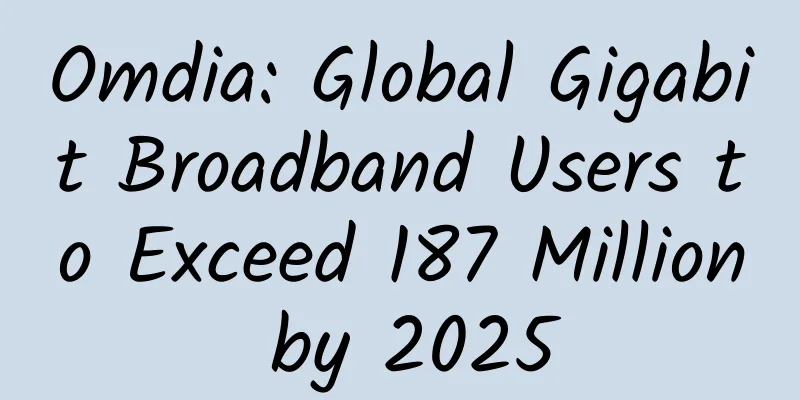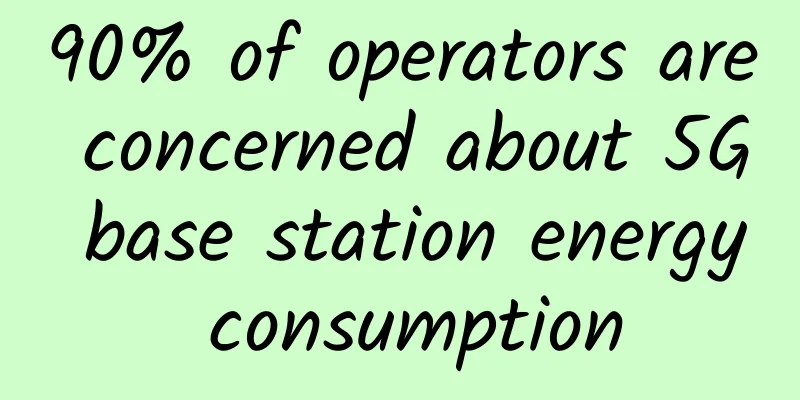Omdia: Global Gigabit Broadband Users to Exceed 187 Million by 2025

|
LightReading reports that the COVID-19 pandemic has created a higher demand for reliable broadband networks that can transmit data traffic in a stable manner and at extremely fast speeds. According to Omdia, all of this is driving the increasing adoption of broadband services with extremely high download speeds and extremely low latency. In a report titled "Trends to Watch in 2021: Gigabit Broadband," Omdia noted that gigabit services are now common, with more than 300 service providers in all major countries offering download speeds of at least 1Gbit/s. In addition, the number of operators capable of providing 10Gbit/s services grew from 29 in 2019 to 36 in 2020. As gigabit services become more mainstream, Omdia warns that quality of service becomes even more important, noting that reliable and stable connections are the criteria that consumers prioritize during the COVID-19 pandemic and beyond. "Many operators have recognized this and are now offering advanced QoE solutions, such as Smart Wi-Fi solutions, as part of their services." However, Omdia's chief broadband analyst, Alzbeta Fellenbaum, also said that although the use of broadband services has increased during the pandemic, consumer demand has not yet driven the development of gigabit services. "Instead, gigabit broadband is used by new entrants to disrupt the market and gain market share, or as a defensive product for existing suppliers to fend off competition." “While, to date, these operators’ influence has remained limited, they have created enough market disruption to force established market players to react. Omdia expects this trend to accelerate as these alternative players attract a variety of investment opportunities, such as private equity funds and other debt lenders,” Fellenbaum said. Fellenbaum also pointed out that full-fiber networks are increasingly becoming the preferred solution for operators. "Even operators that are partially focused on upgrading their legacy networks are gradually realizing the need for reliable, future-proof networks due to the COVID-19 pandemic, which will accelerate the deployment of fiber-to-the-premises (FTTP)." Looking ahead to 2025, Omdia points out that consumer broadband services with download speeds below 100 Mbit/s will gradually exit the market, and average download speeds in leading countries will exceed 500 Mbit/s. In addition, Omdia predicts that by 2025, there will be more than 187 million gigabit broadband users worldwide, accounting for 16% of all fixed broadband users. Most of these users will come from China, followed by the United States, South Korea and Japan. |
>>: Innovation is the key to 5G's "three good"
Recommend
Don’t let “number portability” confuse consumers
According to media reports, the Ministry of Indus...
Huawei Cloud meets in a blessed place, connecting the present and future of Fujian
On September 20, 2017, the "If the Future Ca...
Hengchuang Technology Procurement Season: Hong Kong cloud server flash sale with annual payment starting from 299 yuan, US server monthly payment starting from 600 yuan
Hengchuang Technology has launched a 2021 New Yea...
What will be the future of the Internet after the heyday?
On April 19, it was reported that the current Int...
Friendhosting 15th Anniversary Promotion: 40% off all VPS, starting from €1.8/month in 13 data centers in the United States, the Netherlands, Japan, etc.
Friendhosting released a promotional email titled...
Hengchuang Technology 618 special offer, cloud server as low as 28% off, US/Japan/Hong Kong CN2 line annual payment starts from 296 yuan
Hengchuang Technology has released this year'...
How to calculate 5G backhaul bandwidth?
[[353172]] This article is reprinted from the WeC...
Sharktech: $99/month-2*E5-2670V2/32G memory/500G SSD disk/1Gbps unlimited traffic/Los Angeles data center
Sharktech is a long-established DC merchant in th...
The three major operators earn 400 million yuan a day? ! China Mobile + China Telecom + China Unicom + China Tower < Tencent
Recently, the three major operators have successi...
Network Address Translation Protocol (NAT) and Its Application Examples
1. The meaning of NAT When some hosts within a pr...
5 exciting 5G use cases
As the fifth generation of wireless technology, 5...
Don't know how to learn the protocol? Click it!
Once you enter the communications industry, you w...
DediPath has a 25% discount on the first month, VPS starts at $0.87 for the first month, multiple data centers in Los Angeles/New York, etc.
DediPath has launched a 25% discount promotion fo...
The future of connectivity: Five breakthroughs in smart device research for 2023
The future of connectivity has never been more ex...
The development of 5G should be based on facts and not just pursue book data
At present, the three major telecom operators hav...








![[Double Holiday] edgeNAT: VPS monthly payment 30% off, annual payment 40% off, US/Hong Kong/Korea CN2 VPS monthly payment starts from 42 yuan](/upload/images/67cabc93e4f35.webp)
